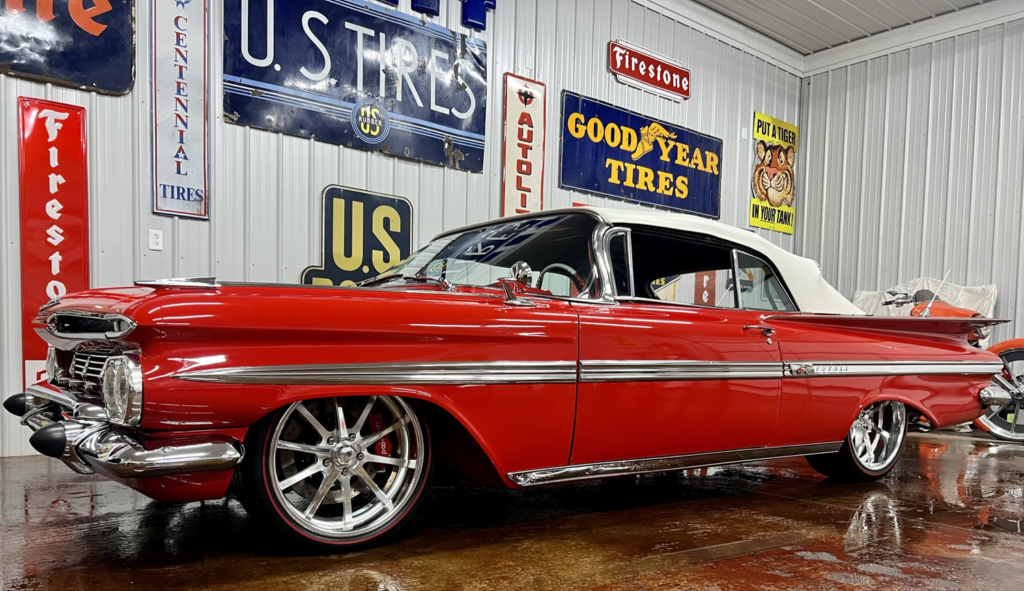Conventional wisdom these days, at least when it comes to watching the greater classic car market, is that both the cars and the buyers are getting younger. It’s true — there are many more cars from the 1990s and 2000s being sold in the collector car market today than there were just a few short years ago, and younger buyers are influencing some of that action.
It makes sense. If it’s true that people collect cars that resonate with them on some personal level, the cars will follow the owners in terms of age. As such, E30 M3s, Mk IV Supras, 5.0 Mustangs and the like are getting a lot of ink these days.
So too is the notion that earlier cars are about to see a steep decline as their owners age out of the market. Cars from the 1950s Sock Hop era, in all their easter egg color goodness, are typically given the nod in that regard.
But it’s not that simple — and GAA Classic Cars’ recent sale in Greensboro, NC is good evidence of that.
GAA Classic Cars typically offers around 750 cars at each of its events, which take place in November and in July. The July sale just wrapped on the 22nd — and it achieved some interesting results that I think apply here.
First was the sale of two 1950s GM cars: a 1953 Cadillac convertible and a 1959 Chevrolet Impala convertible. The Cadillac was a full custom known as “Root Beer Float,” finished in brown metallic over off-white leather. It had been featured in “Street Rodder” magazine and had won a few awards, but it was still fresh overall, too, with just 325 miles on the clock. It sold for $259,200.
The Impala was also a custom, but not to the same level as the Cadillac. Much more of it was stock, or at least stock-appearing, including the W-series Tri-Power 348 engine, the red interior and the chrome and trim. What was different was a set of Wilwood disc brakes, an overdrive transmission, Billet Specialties wheels and a slightly lowered stance. Price here was $222,000.
Now, well-done customs have seen strong pricing across the board since the pandemic. It shouldn’t serve as much of a surprise to see these two achieve this kind of money. But what is interesting is the depth of this segment — which is something I wrote about in the most recent edition of Linkage (#013 — Preservation) as it related to a custom C10 that sold on Bring a Trailer for similar big money.
Time and time again, customized cars from the 1950s have rung the bell in our new market, and it’s happening at more and more locations, from Barrett-Jackson Scottsdale to places like GAA Classic Cars’ event in Greensboro.
Why? I think it’s pretty simple: Style meets modern usability in cars like these, and that speaks to a wider audience than a stocker would have — especially with a buyer who is buying with a certain kind of activity and curb appeal on their mind.
That leads to inflated pricing for cars that have the right look matched with a more updated feel, and that pricing brings more examples for sale that have been modded from stock.
This is how at least some 1950s Americana will stay relevant in an auction market that’s increasingly filling with 1990s plastic fantastic. Park a 1959 Impala dropped on 20s next to an E30 M3 and see which one draws more attention. Style still has a place here.
Of course, billet wheels and big brakes are not the only path forward for American cars from the 1950s era. It’s just an increasingly important one, at least right now.
One other fun one to note: GAA Classic Cars also sold a 1985 Chevrolet C10 shortbed pickup for $99,360. It had 148 miles on the clock and still had plastic on the seats from delivery. Rare.
Call that a one-off if you want due to the mileage, but again, it supports just how popular classic trucks have become in the market today.
You can see what else was offered and sold at GAA Classic Cars’ July sale here.















More Stories
Cars to Watch in Arizona
A Look Inside SEMA 2024
The Future of Muscle